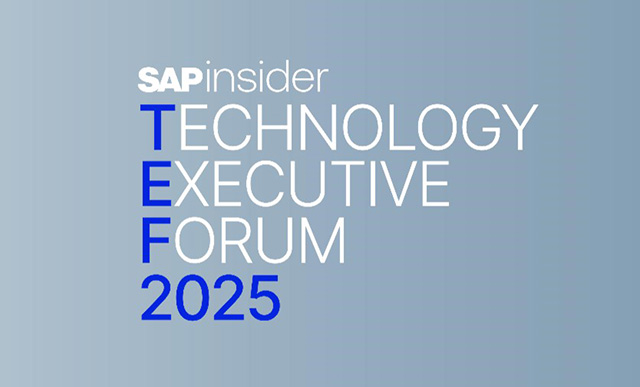This week,
Vertex released 2022 fourth-quarter
earnings and full-year 2023 guidance above Wall Street's expectations. On the earnings call with investors following the announcement, Vertex CEO David DeStefano spoke about the favorable tax compliance environment for his company's product offerings. He stated, "Businesses today face immense regulatory change and indirect tax complexity. These challenges intensify as they expand into new regions, diversify offerings, and accelerate e-commerce growth."
The Vertex CEO's sentiment aligns with our tax community, as most respondent organizations from the
SAPinsider Global Tax Management benchmark report said they required intelligent and real-time tax determination and compliance reporting to support their global tax management strategy (68% of survey respondents). An insight later validated on the call when DeStefano referenced one of multiple signature "competitive six-figure deals" won in the fourth quarter. One particular contract win focused on a client moving forward with Vertex to deploy cloud-based indirect tax determination automation based on the differentiated "technical capabilities of Vertex's cloud solution to support data accuracy in every global jurisdiction, with tight integration into the client's SAP platform." Vertex attributes this as one of the key contributors to growth in their business in Europe in 2022.
On the same call, CFO John Schwab expanded on the favorable market set-up for indirect tax management solutions, saying, "Indirect tax automation is a must-have, not a nice-to-have, in today’s complex business environment." Let's examine the current business environment creating a tailwind for growing investments into indirect tax automation.
The first point Vertex CEO David DeStefano makes is that businesses face "immense regulatory change." This is undoubtedly true; in just the last year, we've seen significant changes to tax laws in the U.S. (with more likely on the way). According to data from the
Vertex 2022 End-of-Year Sales Tax Rates and Rules Report, in 2022, a surge of county-level rate changes in the US reached its apex for the past three years. Furthermore, districts across America saw tax rates increase at more than triple the rate of districts that saw their taxes decrease - an unprecedented gulf between opposite trends. City levels sustained near-record highs, mirroring a familiar average over the most recent half-decade.
Meanwhile, across Europe, governments are embracing tax digitization to bolster public revenue intake and close longstanding VAT gaps. Poland, Italy, Hungary, and France recently committed substantial resources to e-invoicing mandates. The European Commission proposed a revolutionary plan for digital invoicing throughout the EU with mandatory near real-time reporting of intra-EU transactions. Keeping up with all of these changes is a daunting task for an organization of any size, especially those expanding across multiple jurisdictions and navigating cross-border transactions to compete in the digital economy. Roughly a quarter of SAPinsider organizations view growth and expansion of business as a core driver of global tax management strategic priorities.
DeStefano raises the second point that businesses also face increased "indirect tax complexity." Organizations expanding into new markets and jurisdictions are subject to an ever-growing web of taxes. Indirect taxes can be very complex. Complying with the different rules and regulations can significantly burden tax teams. Findings from SAPinsider research confirm as much, with e-invoicing (47% of respondent organizations), VAT/GST (45%), sales and use tax (44%), and e-commerce regulations (34%) all among the top regulatory updates where tax teams spend the most time. Indirect tax automation can help organizations reduce manual effort in complex tax determination processes to increase agility, accuracy, and compliance with ever-changing requirements.
DeStefano also highlights how the technical capabilities of Vertex's cloud solution and tight integrations into the customer's SAP platform, and strong partnership with SAP differentiate the company and help customers manage these indirect tax complexities and regulatory changes. It makes sense that this "differentiator" would result in a major contract win, as half of the respondent organizations identified ERP and application integration with a global tax engine as the top pain point impacting their overall global tax management strategy. SAP S/4HANA Cloud offers a cloud-based solution for global tax management designed to support real-time and accurate e-invoicing, reporting, and tax controls. The cloud delivery model enables organizations to keep pace with new regulations and legal changes seamlessly. This approach to global tax management aligns with our research, as a large share of respondent organizations (40%) want to leverage automation capabilities in SAP S/4HANA to address drivers of global tax management strategic priorities. SAP partners, such as Vertex, can support the efficient integration of global tax engines with built-in automated tax determination capabilities.
This brings us to the statement by CFO John Schwab. He notes that for organizations operating in the current digital economy, "indirect tax automation is a must-have." With the accelerated pace of change, tax and business professionals recognize automation as a way to enhance indirect tax determination efficiency and stay ahead of frequent and complex indirect tax compliance content updates. The SAPinsider tax community agrees with Schwab that indirect tax automation is critical to their global tax management needs, as respondent organizations identified digital transformation of tax, powered by automation, use of robotic process automation (RPA), artificial intelligence (AI), machine learning (AI), and migration to SAP S/4HANA, as the top driver of global tax management strategic priorities.
The business environment is complex and ever-changing, and manual compliance processes aren't enough. Vertex's strong earnings and guidance, coupled with CEO and CFO comments that tightly align with SAPinsider research, confirm that organizations that fail to invest in indirect tax automation and digital transformation of tax risk falling behind.
Make sure to download and read our Global Tax Management Benchmark Report available for all members of the SAPinsider Community.






